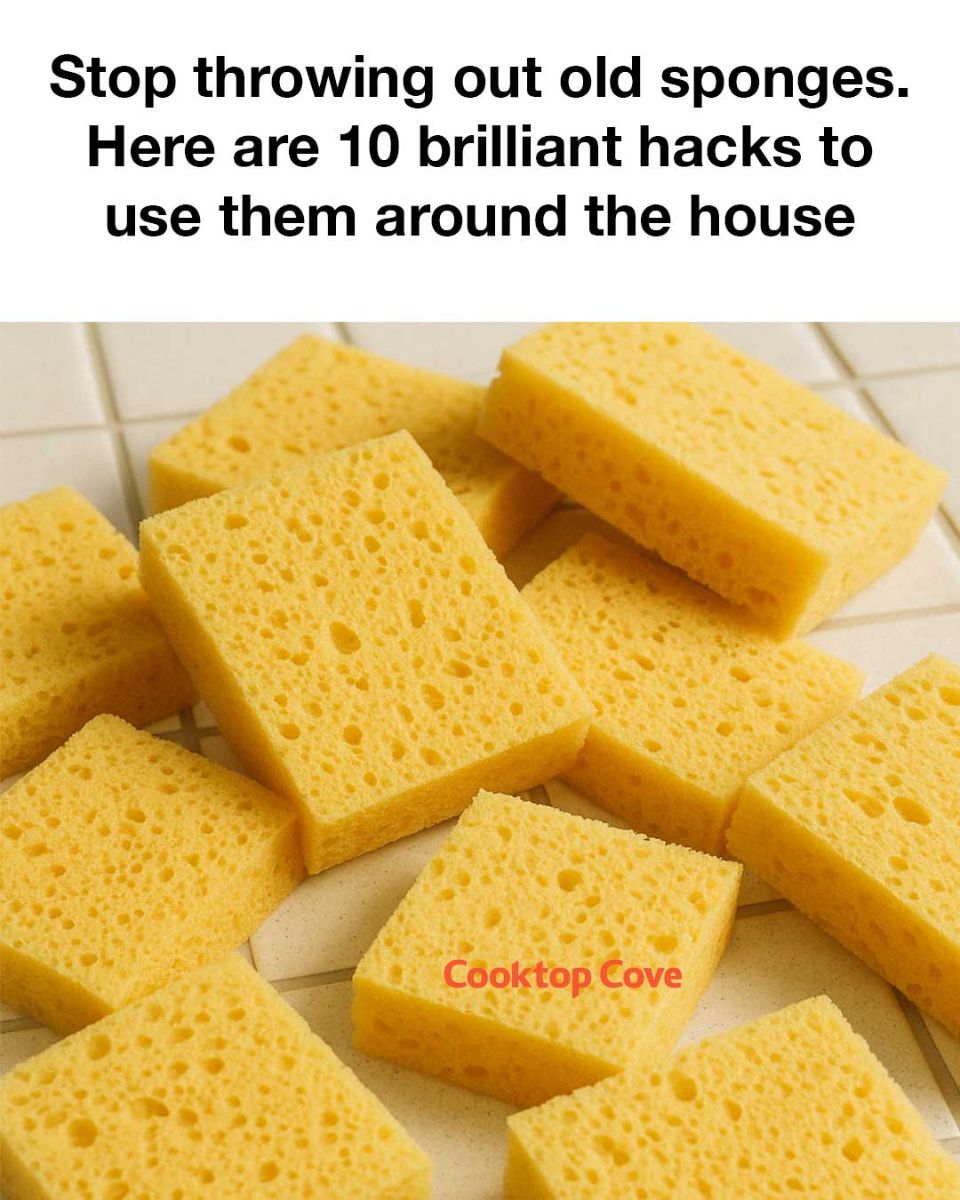ADVERTISEMENT

Stop throwing out old sponges. Here are 10 brilliant hacks to use them around the house
1. Revitalize Your Plants with Sponge Water Reservoirs
Old sponges can be a gardener’s best friend. By placing a sponge at the bottom of a plant pot, you can create a water reservoir that helps keep soil moist for longer periods. This is particularly useful for potted plants that tend to dry out quickly. The sponge absorbs excess water and releases it slowly, ensuring your plants receive a steady supply of moisture. This simple trick can reduce the frequency of watering and promote healthier plant growth.
2. Create a DIY Soap Dish to Extend Soap Life
Transform an old sponge into a practical soap dish that helps extend the life of your soap bars. By placing a sponge under your soap, you allow excess water to drain away, preventing the soap from becoming soggy and dissolving too quickly. Simply cut the sponge to fit the size of your soap bar and place it in your bathroom or kitchen. This not only keeps your soap dry but also keeps your sink area tidy.
3. Craft a Handy Pin Cushion for Sewing Projects
For those who enjoy sewing, an old sponge can be repurposed into a convenient pin cushion. Sponges are perfect for holding pins and needles securely in place. To make a pin cushion, simply cut the sponge into a desired shape and cover it with a piece of fabric. Secure the fabric with glue or stitches, and you have a functional and cost-effective pin cushion that keeps your sewing area organized.
4. Use Sponges as Odor Absorbers in the Refrigerator
Combat unpleasant odors in your refrigerator by using old sponges as odor absorbers. Simply soak a sponge in a mixture of baking soda and water, then place it in the fridge. The sponge will absorb unwanted smells, leaving your refrigerator smelling fresh. Replace the sponge every few weeks to maintain its effectiveness. This is an easy and eco-friendly way to keep your fridge odor-free.
5. Make a Non-Slip Rug Pad for Safety
Prevent rugs from slipping and sliding by using old sponges as non-slip pads. Cut the sponges into small pieces and attach them to the underside of your rugs using double-sided tape or glue. The sponges provide grip and prevent accidents caused by slipping rugs, making your home safer, especially for children and the elderly.
6. Design a Custom Ice Pack for Injuries
Create a reusable ice pack by soaking an old sponge in water, placing it in a plastic bag, and freezing it. The sponge will freeze solid, forming a flexible ice pack that can be used to soothe injuries or reduce swelling. Once thawed, the sponge can be refrozen and used again, making it a cost-effective and environmentally friendly alternative to disposable ice packs.
7. Protect Fragile Items with Sponge Padding
When moving or storing fragile items, use old sponges as padding to prevent damage. Cut the sponges into pieces and place them between delicate items such as glassware or electronics. The sponges act as cushions, absorbing shocks and preventing scratches or breakage. This is a simple yet effective way to protect your valuables without spending money on expensive packing materials.
8. Construct a Sponge Paintbrush for Creative Projects
For artists and crafters, old sponges can be transformed into unique paintbrushes. Cut the sponge into various shapes and sizes to create different textures and effects in your artwork. Sponges are particularly useful for creating soft, blended backgrounds or applying paint to large areas. This is a fun and inexpensive way to experiment with new painting techniques.
9. Build a Simple Shoe Deodorizer
Keep your shoes smelling fresh by using old sponges as deodorizers. Cut the sponge into small pieces and sprinkle them with a few drops of essential oil or baking soda. Place the sponge pieces inside your shoes overnight to absorb moisture and odors. This is an easy and natural way to maintain fresh-smelling footwear.
10. Develop a Sponge-Based Cleaning Eraser
Create a DIY cleaning eraser by cutting an old sponge into a small block and dampening it with water. Use it to scrub away scuff marks, crayon stains, or dirt from walls and surfaces. The sponge’s texture makes it effective at removing stubborn marks without damaging the underlying surface. This is a cost-effective alternative to commercial cleaning erasers.
Conclusion: Embrace the Resourcefulness of Repurposing Sponges
By finding new uses for old sponges, you not only reduce waste but also discover creative solutions to everyday problems. These simple hacks demonstrate the versatility and resourcefulness of sponges, encouraging a more sustainable lifestyle. Next time you reach for a new sponge, consider the potential of the old one and how it can continue to serve you in new and unexpected ways. Embrace the challenge of repurposing and enjoy the satisfaction of making the most out of what you have.
ADVERTISEMENT